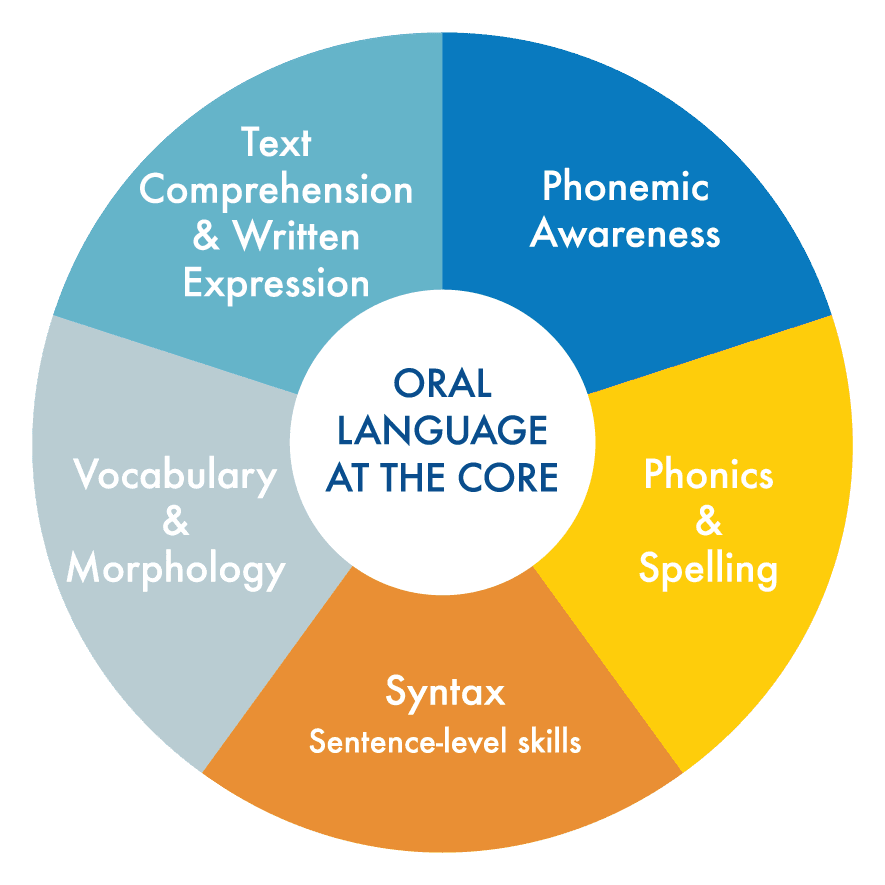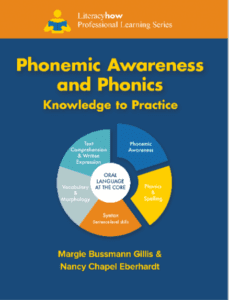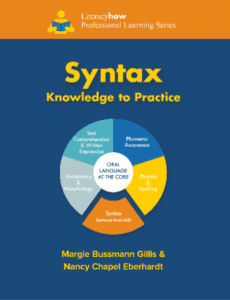
text Comprehension
What is it?
Comprehension—the ability to make meaning—is the ultimate goal of reading. It is much more than a collection of skills and strategies that students apply to text. It requires metacognitive skills, vocabulary, background knowledge, and verbal reasoning ability.

text Comprehension
What is it?
Comprehension—the ability to make meaning—is the ultimate goal of reading. It is much more than a collection of skills and strategies that students apply to text. It requires metacognitive skills, vocabulary, background knowledge, and verbal reasoning ability.
Frequently asked questions
What is the relationship between language and reading comprehension?
Teachers must first build students’ language comprehension skills, best developed early through interactive read-alouds and dialogic reading. This instruction has the added benefit of increasing students’ background knowledge, vocabulary, and text structure knowledge as well as their verbal reasoning skills.
What is Academic Language and how do I teach my students to use it in my classroom?
When and how should I begin Comprehension Instruction?
Comprehension can’t wait for beginning readers to master decoding. Instruction that focuses on a variety of language processing abilities needs to occur concurrently with code-breaking instruction. Five big ideas shape Literacy How’s focus on reading comprehension instruction: text structure, background knowledge, text cohesion, inference, and the reading/writing connection. Each big idea emphasizes the development of students’ ability to understand text. Arranged by Chall’s Stages of Reading Development, see Comprehension: Knowledge to Practice to learn more.
Teacher tip: Analyze and Prep Texts
Prepare the text befor teaching it. Be sure to analyze the text so that it can be used effectively to meet your students’ needs. This analytic process involves identifying possible skills within the domain suited to a particular text, and then tailoring language processing activities based on the text.
Teacher tip: text selection matters
When selecting a text to use for comprehension instruction, be sure to consider your instructional objectives for the lesson. All texts are not created equal!
Teacher tip: Keep Questioning
Be sure to build in adequate time to ask open-ended questions before, during, and after reading the text to/with your students. These types of questions promote your students’ metacognition–thinking about their thinking!
tips for principals: Support Language Comprehension
Teachers need to understand the language underpinnings of reading comprehension in order to teach children how to “read text closely” (a Common Core State Standard buzz phrase). Students who struggle with language for any reason (i.e., English Language Learners, unfamiliarity with academic language, reading or language learning disabilities) must have highly skilled, well trained teachers!
Read More to Learn More
- Akhondi, M., Malayeri, F. A., & Samad, A. A. (February 2011). How to teach expository text structure to facilitate reading comprehension. The Reading Teacher 64 (5), 368-372.
- American Educator. American Federation of Teachers. (Spring 2003. Entire issue). The fourth grade plunge. The cause. The cure.
- Cain, K. & Oakhill, J. (2014). Reading comprehension and vocabulary: Is vocabulary more important for some aspects if comprehension? L’Année Psychologique 114, 647-662.
- Dymock, S. (2007). Comprehension strategy instruction. Teaching narrative text structure awareness. The Reading Teacher 61(2), 161-167.
- Hogan, T., Sittner Bridges, M., et al. (2011). Increasing higher level language skills to improve reading comprehension. Focus on Exceptional Children 44 (3), 1-20.
- Institute of Education Science’s 2010 Practice Guide, “Improving Reading Comprehension in Kindergarten Through 3rd Grade”.
- Recht, D. R. & Leslie, L. (1988). Effect of prior knowledge on good and poor readers’ memory of text. Journal of Education Psychology 80 (1) 16-20.
- RAND Reading Study Group. (2002). Reading for understanding. Toward an R & D program in reading comprehension.
- Wexler, N. (January 2019). Why we’re teaching comprehension in a way that doesn’t work. Forbes. Retrieved from https://www.forbes.com/sites/nataliewexler/2019/01/23/why-were-teaching-reading-comprehension-in-a-way-that-doesnt-work/#582f6d5637e0.
- Willingham, Daniel T. (Winter 2006/2007). The usefulness of brief instruction in reading comprehension strategies. American Educator 30, 39.
Literacy How Professional Learning Series
The Literacy How Professional Learning Series translates the latest reading research into how-to instruction. The Knowledge to Practice book Series—Phonemic Awareness and Phonics, Syntax, Vocabulary, and Comprehension—is based on the current and comprehensive Literacy How reading model. It draws upon the authors’ decades of expertise and experience working with thousands of general and special education teachers. The Series emphasizes Pre-K-3rd grade conceptual and skill development. Teachers of older emerging or struggling readers will also find these tools useful.

Phonemic Awareness and Phonics—the keys to breaking the code!

Syntax is essential—even for beginning readers!

Vocabulary knowledge is essential for effective comprehension!

Comprehension is the goal of reading—even for beginning readers!